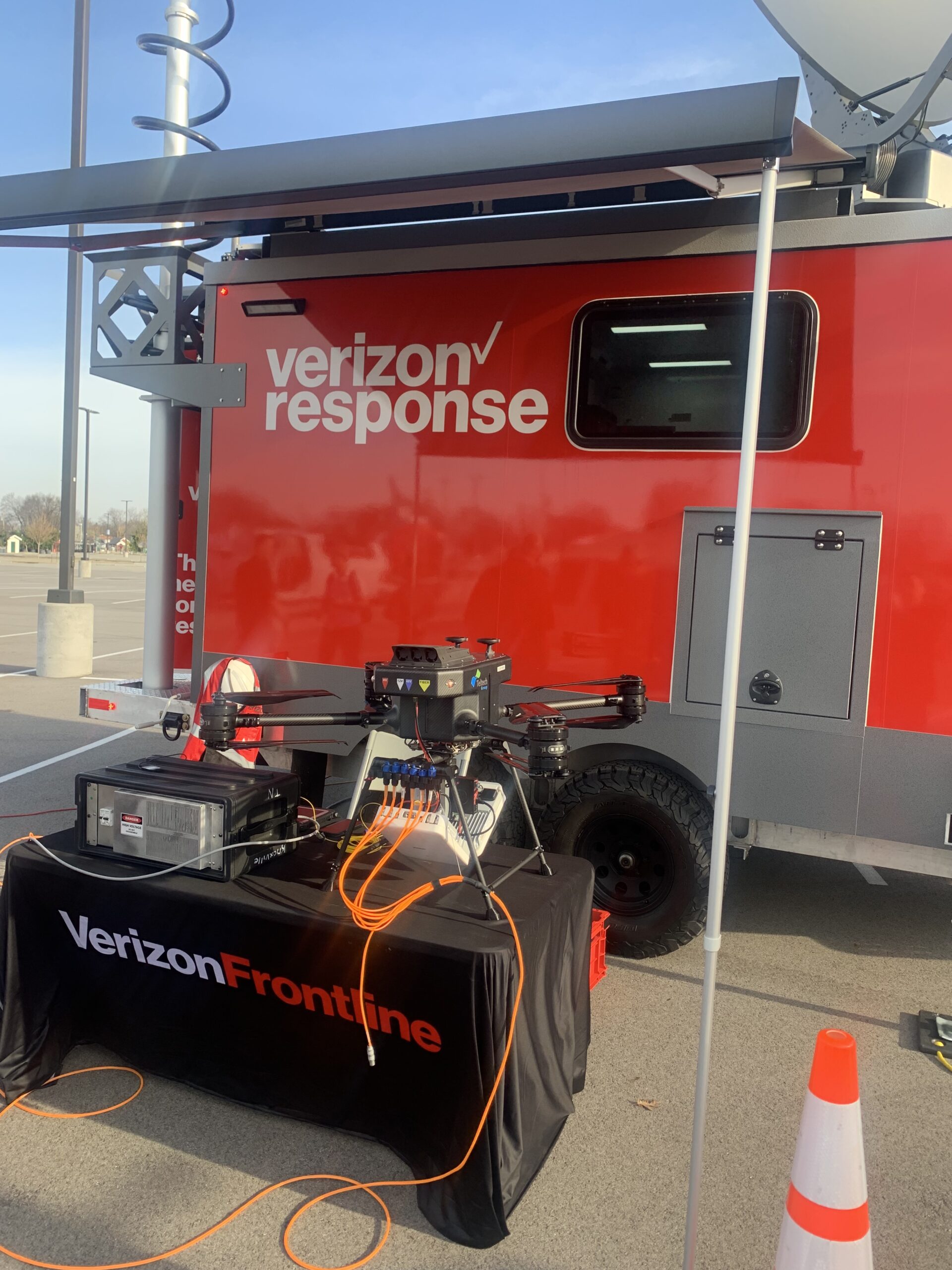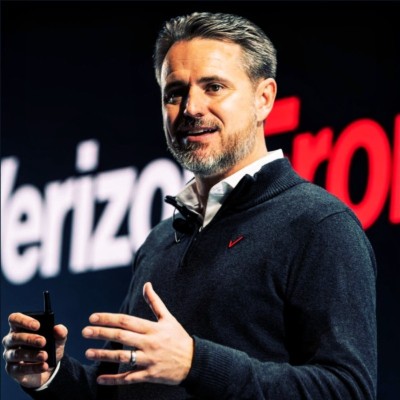NFL Draft 2024: Verizon Expands Broadband Capacity To Handle the Spike in Demand
Mobile cells will help accommodate first responders, social media, sports betting
Story Highlights
As the NFL Draft gears up in Detroit, an estimated 400,000-plus football fans are expected to crowd the city’s downtown. All of them, it’s safe to say, will be toting smartphones and/or tablets, ready to populate their Instagram and X accounts as the next class of NFL players find their new seasonal homes.
That’s the cue for Verizon to roll out — literally — an array of supplemental broadband generators — in this case intended to support that huge spike in demand for online access. Large-scale sports events have become a regular proposition on the company’s itinerary in recent years.
“The city had told me that they were at over 400,000 registered on the OnePass NFL app,” says Scott Hubble, principal engineer onsite, Verizon. “With up to 500,000 anticipated visitors and some good weather forecasted, it’s about connecting all of them.”
COWS Are Deployed

A Verizon Response Team satellite picocell on trailer (SPOT) supplement small cells in the Detroit downtown to connect emergency-operations centers and first responders.
Verizon, which has supported the NFL Draft since it became a road show in 2015, is deploying two of its “COWs”— mobile “cellular on wheels” platforms to temporarily supplement a venue’s installed cellular infrastructure to accommodate massive crowds. In the case of the NFL Draft, they supplement the 20 small cells the company had built in and around the downtown area to serve other sports events, such as the Chevrolet Grand Prix in June 2023. And those cells are in addition to 30 small cells already in the area as part of the 5G Ultra Wideband infrastructure built after Verizon acquired additional C-band spectrum for 5G in FCC auctions. (Verizon won C-Band licenses for 140-200 MHz in all available markets and began deploying 60 MHz in the first 46 areas in 2022.) The result, says Hubble, is a cumulative four- to five-times increase in speed and capacity.
“The NFL Draft accelerated Verizon’s deployment of technology by three years,” he points out. “We’ve added what we normally would’ve done over a three- to five-year period. We’ve done that in the last two years to get ahead of the Draft, to get ahead of the Grand Prix [in June 2024], to get ahead of these high-customer-demand events. We have 50 small cells now in the central business district that serve this event and venue area, and what’s really cool is that 98% of that $25 million investment we made in the city of Detroit on infrastructure in the last year is staying after the Draft is done. All of the underground fiber infrastructure that we built to connect everything, all of the power upgrades to power grid and infrastructure that we put into play, and all of the buildouts of our wireless infrastructure remain here.”

Verizon’s Scott Hubble: “With up to 500,000 anticipated visitors and some good weather forecasted, it’s about connecting all of them.”
Some of Verizon’s temporary broadband boosters are there to support the needs of first responders, whose presence is critical for large sports events, a fact underscored by the recent 10th anniversary of the Boston Marathon bombing. The nodes include airborne cells aboard small drones; satellite picocell on trailer (SPOT), which deploys eFemtos and/or Wi-Fi to connect emergency-operations centers and first responders where connectivity is challenging or nonexistent; a MatSing ball antenna, capable of replacing 14 conventional cell sites; and a robotic emergency dog (RED), one of several Ghost Robotics dogs that the Verizon Frontline Innovation Team — the company’s own DARPA-type group — is using to explore and develop potential mobile connectivity solutions intended to support first responders. Verizon’s response team will further deploy its rapid-response connectivity unit (RRCU), which provides connectivity to specific areas while being able to broadcast secure Wi-Fi and cellular communications.
Although support for emergency services is critical, Hubble notes, the need for significantly expanded wireless coverage is also being driven by social media, on which sports of all kinds have been increasingly relying to broaden and deepen fan engagement. Another dynamic driving the need for expanded spectrum at sports venues is the rapid proliferation of online sports betting. Not only is wagering on the outcome of games and races offered, but it can become as granular as individual plays and moments, so-called proposition or micro bets, and that need for immediacy puts additional strain on cellular networks.
Video Over the Network

Verizon’s Cory Davis: “Putting video on our network is like a highway: if all the data packets are cars, well, video is like putting semitrucks on the highway.”
The massive increase in broadband deployment goes beyond those forces, however, to support a significant increase in video demand. “[First responders] need that real-time situational awareness,” says Cory Davis, VP, Frontline Innovation Team, Verizon, “whether on the ground through a bodycam or in the sky through an aerial unmanned system like a drone. We’re seeing a huge uptick in demand specifically around those situational-awareness applications platforms to provide those video feeds in real time to first responders. And putting video on our network is like a highway: if all the data packets are cars, well, video is like putting semitrucks on the highway. We now have all this [new] spectrum, but we also have so many more lanes of highway.”
Coach-to-Coach Support
Another use for all that new broadband is Verizon’s coach-to-coach system, a private 5G network deployed within 30 NFL stadiums last season, as well as for games in London and Frankfurt. Its purpose, says Davis, is to boost reliability for wireless coach communications: “It’s so that they can have a truly reliable, secure network that is in their control. So far, the feedback has been phenomenal, based on the reliability and just how well that service has been working for all the coaches and the teams across the country.”
The NFL has gone international in recent years, and this year’s Draft has its own techno-diplomatic challenges. Detroit’s geographical proximity to Canada meant that Verizon’s team had to do its own frequency coordination with its Canadian counterpart.
“They’re literally a mile from here,” says Hubble. “On the biggest day, which will be Thursday, we’ll see roughly 150,000 people simultaneously in a very small geographic footprint. The coverage has to be big, but it also has to be tight. That’s a real challenge.”
